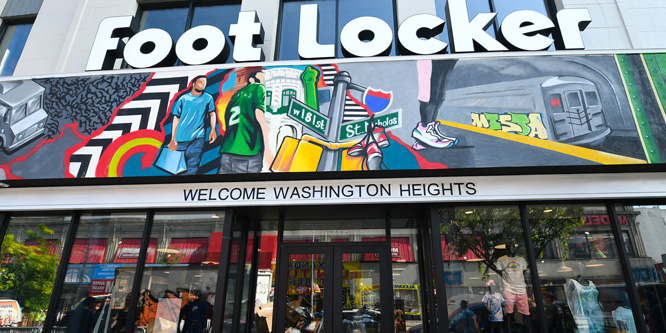
Photo: Foot Locker
February 20, 2020
Should retailers scale hyper-localized store elements chainwide?
Community-driven experiences. Local art and science. Stores as destinations. Product discovery through theater and storytelling. These themes were heard at the recent Future Stores Miami conference where retailers discussed blending the elements that make each local community unique into their store experiences.
Using local designers and artists, many are creating experiential destinations and meeting places with hyper-localized store formats. Foot Locker exemplified this approach with its Powerstore format in New York City’s Washington Heights.
Kambiz Hemati, the former VP, global retail design at the chain, described elements of the store including a central staircase facing the entrance with stadium-style seating areas, facilitating its use as a neighborhood meeting location. Mr. Hemati said that one of the design goals was to create a place where customers could “hang out” as well as shop and browse. The store includes several lounge areas for use as a community gathering spot.
Foot Locker worked with local artists to create a mural over the store entrance and to decorate fitting rooms and other areas with “street art” flair, creating a more welcoming environment.
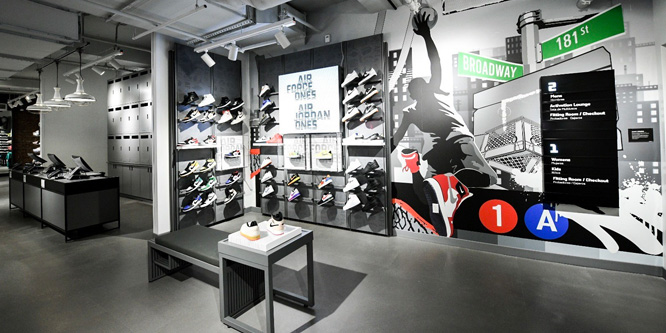
The retailer also worked with three local designers to produce unique items sold exclusively at this location. The products sold out in the first 24 hours of availability. Foot Locker is now working with those designers to develop new products.
Other examples of localized experiences included:
- DSW adding nail salons to seven stores to broaden local services offered to shoppers.
- UNOde50 adapting two store locations to reflect the local community’s style and architecture.
- Office Depot converting part of two stores into co-working spaces and podcast studios for local small businesses to rent.
- Levi’s redesigning its store layout using modular structures to tell the brand’s “fit and style” story to customers as they walk through the store. Customers then end their shopping journey at a personalization counter where they can customize their purchases.
A common question asked at the Future Stores conference was how retailers would scale such experiences across store fleets and formats. Mr. Hemati commented that, while Foot Locker does not believe these experiences are scalable to the average mall store, it could be possible to develop micro-experience versions that would scale. He and others acknowledged that, the more localized the experiences, the more difficult it would be to scale the implementation across all stores.
Discussion Questions
DISCUSSION QUESTIONS: As retailers and brands open more localized, community-driven stores, how will they scale the experiences to the rest of their store fleets? What is the right mix of store formats and sizes retailers should adopt?
Poll
BrainTrust
Ken Morris
Managing Partner Cambridge Retail Advisors
Gene Detroyer
Professor, International Business, Guizhou University of Finance & Economics and University of Sanya, China.
Recent Discussions


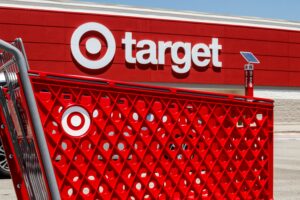
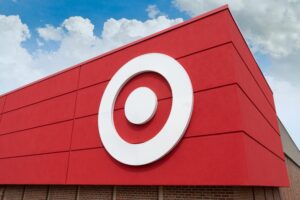

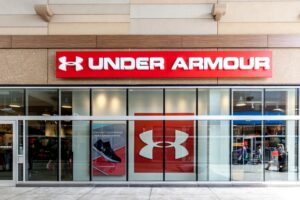

The key to developing localized store experiences is hiding in plain sight: store staff! Engage the stores teams by asking them what resonates with people in their local community. Ask for suggestions, input and ideas about events and experiences. Offer them opportunities to help design the experiences and incentivize them with bonuses for good results.
Scaling local experiences seems to me to be an oxymoronic concept. A more constructive way to think about this opportunity, which is scalable, is to empower local store management. Hire strong, creative managers that are from their local markets, listen to what they suggest, give them money to spend against the opportunity, let them share in the rewards when it works, and tolerate some mistakes in the spirit of learning.
I like this opinion because it would be terribly difficult, albeit a great advantage, to “localize” hundreds of stores from a central location. The troops on the ground know best who their customers are, sometimes by name, and what they like. Remember the black book that sales people kept?
Exactly, Ken! Working for a chain store that thinks it’s local is an oxymoron. Those store managers still have to follow corporate guidelines and use company planograms. There’s not a lot of room for creative thinking that could make a particular store stand out. I can hear the headquarters’ comments now, “But that’s not on brand!”
Every location is “local” and that means, to some extent, every location is a unique situation. To make that manageable chains could pick one or two elements of the stores that are going to be localized. Options mentioned by Mr. Hemati are good examples: the store front, the interior decor, a local supplier. But retailers should approach the “neighborhood hangout” strategy with care. Not every space in a neighborhood can be a Starbucks. And retailers must not lose the common elements that distinguish them to begin with. Whether it is shoes with Foot Locker or office supplies with Staples, the core reason for being is still the product or service offering.
Although it may be challenging to localize stores completely across the chain, there are some elements that can and should be able to be implemented. One of the complaints I hear from fellow New Yorkers is that retail in general has lost its soul – the mom and pop stores that made a neighborhood unique have been priced out in favor of the national chains. The Gap you see in NYC looks exactly the same as the one you’ll see everywhere else. With some creative thinking, this could be an area where a retailer who wants to stand out could do so in big and even small ways.
I believe retailers need to hire local influencers. People who are wired into their local scene. Retail is theater and hiring creative local directors and actors will be the key to a successful performance.
Scale the concept. That means empower the local store to infuse certain local tastes and needs in terms that would be organic to the products they are selling. A hangout ambiance is good for a coffee shop, but not so relevant for shoe stores like Foot locker.
Many actually do localization to some extent. You find local pros in Home Depot which is absolutely relevant to what the store does. You find Barnes & Noble creates that relaxed vibe and is relevant to a large extent, with information about local events. Panera and Starbucks have bulletin boards to infuse some local feel into the experience. Obviously none of these are hyper-local, but the intent is to be part of the local community.
But an inorganic/disjointed in-store experience is not scalable because it would not move the sales. It would be a talking point, but not much else.
Tailoring to community and curating the assortment is a benefit to the retailer and customers will appreciate the store and treat it as “their store” but, as has been mentioned, you have to have staff that understands the assortment and understands the customer. I believe the long term investment in tailoring will pay off to the retailer.
Indie is the new black. Independent retailers are deeper into local and community than chain stores will ever be. It’s a different mindset. The examples above, like DSW’s nail salon or Levi’s in-store signing, are not examples of either local or community. That would involve assortments, events, classes, etc. that are truly related to the community, like Foot Locker working with local designers. Being a true part of a community means more than small tweaks, it means being active in what happens every day.
This one is simple. Localization is the antithesis of the mall mentality and we all know where malls are going.
The growth of malls was all about cookie cutter concepts. One could blindfold a shopper and take them to six malls in six different states and they would not know what state they were in.
This is akin to the centralized-decentralized debate between efficiency-seeking operators and consumer-facing unique differentiation by marketers. You cannot scale the specifics of an experience, but you can do so with the concept. Broad ideas do scale, local manifestations and execution playbooks do not. For example, adding a playful experiential element to enhance the in-store experience in an upscale suburban mall will likely look different than one in an urban mall or one that serves a college region. So while adding local art in a store is the core idea, the featured artists and their works reflecting unique styles will vary by store location and local sensibilities.
The key is to understand your brand values and your customers so you are able to design enhancements to the in-store experience in novel ways that are scalable at the core but can be executed locally in ways that are most meaningful and relevant for the communities they serve.
I’ve worked with many local retailers and have discussed the advantage they have with a local/community presence that larger chains don’t have. It’s obvious that the big chains are seeing the advantage of “doing local well.” You can scale the more personalized local presence as a process, but each geographical area and community must still be unique to the area.
Of course, this is a great thing to do. Trader Joe’s has done this for decades as well as anyone.
I think scaling here means providing the space, budget and guidelines which the local store employee can be creative with the store design and experience. You can’t centralize decisions for local experiences because it just doesn’t work that way. Question is then whether retailers are hiring the right people in the stores to make the decisions.